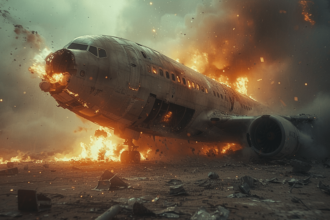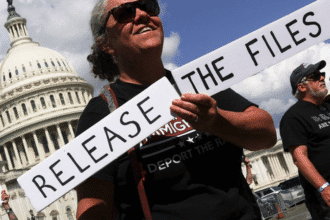Rising tensions between the US and Ukraine define the new chapter in international diplomacy the war between Ukraine and Russia opens. Former US President Donald Trump has attacked Ukrainian President Volodymyr Zelensky for his failure to negotiate over the acquisition of Crimea by Russia in 2014. Trump’s remarks have reoriented attention on the diplomatic obstacles impeding a peace accord.
- In what part does the US participate in the war between Ukraine and Russia?
- Why is Ukraine not compromising on Crimea?
- Is a ceasefire possible in the conflict between Russia and Ukraine?
- What direction should peace negotiations in the Ukraine-Russia War go?
- The Human Cost of the Ukraine-Russia War
- In general, will the conflict between Russia and Ukraine end soon?
Trump asserted on Truth Social that a peace agreement was “very close,” but that Zelensky’s denial of any territory concessions was extending the war. Trump maintained that the battle would keep dragging on with terrible repercussions until Ukraine agrees on territorial concerns, particularly with relation to Crimea. His comments have spurred a more general discussion on the difficulties of attaining a truce between the two fighting countries.
With civilian losses and extensive relocation, the situation in Ukraine has grown ever more bleak. Tens of thousands of people have already died, and millions of Ukrainians have left their homes in response to the war between Ukraine and Russia. Nowadays, the world is at a turning point as foreign players advocate a termination of the war. But when the US gets more involved, Zelensky’s consistent posture on Crimea still poses a major challenge to peace.
In what part does the US participate in the war between Ukraine and Russia?
The US’s involvement has become ever more complicated as the battle continues. Trump, who has often said he could end the war between Russia and Ukraine in one day, is now publicly annoyed with Zelensky’s refusal to participate in negotiations aiming at a ceasefire. Given Ukraine’s refusal to yield on important territory concerns, he has said that negotiations with Russia would be simpler than with Ukraine.
“I thought it might be easier to deal with Zelensky, but so far, it’s been harder,” Trump remarked, underlining the mounting conflict between the two leaders. The remarks of the former president capture a larger attitude among US government officials, who believe that negotiating with Ukraine is getting more challenging.
Although Trump’s remarks have drawn criticism, the US is still quite dedicated to helping Ukraine become sovereign. President Biden and other Western leaders have promised ongoing military and financial support for Ukraine and made it plain they do not acknowledge Russia’s rule of Crimea. Trump’s demands for a more pragmatic approach to discussions, particularly if the crisis between Russia and Ukraine grinds on, cast into doubt the future orientation of US foreign policy.
Why is Ukraine not compromising on Crimea?
The question of Crimea is fundamental to the impasse in the war between Russia and Ukraine. Russia illegally acquired the Crimean Peninsula in 2014, an action much denounced by the international community. Ukraine has asserted since then that Crimea is within its sovereign borders and has promised to recover it.
Declaring, “There’s nothing to talk about here,” President Zelensky has been adamant in his posture. This goes against our constitution. Agreeing to relinquish Crimea would mean violating international law and betraying Ukrainian national interests for Zelensky. Many Ukrainians see the return of Crimea as a question of national pride and sovereignty, hence, his stance has attracted great support on the home front.
Many Western nations also support the posture of the Ukrainian administration since they contend that force-based border changes should not be done. Acknowledging Russia’s unlawful takeover of Crimea would create a risky precedent for world affairs and empower other nations to seek military-based territory expansion. This is a non-negotiable problem for Ukraine, and Zelensky has made it very evident that no peace agreement will be embraced absent the return of Crimea.
Is a ceasefire possible in the conflict between Russia and Ukraine?
Months of continuous attempts by foreign mediators to negotiate a ceasefire in the war between Russia and Ukraine have passed. One of the most talked-about concepts is a proposal to freeze present geographical borders. To reach a de facto ceasefire, Russia and Ukraine would have to give up some of the land they presently occupy. On both sides, though, this idea has drawn opposition.
If Russia can keep control over Crimea and other acquired territory, it has said it would be ready to discuss such a settlement. Adopting the present geographical status quo for Ukraine would be like giving up its sovereignty and, therefore, implying defeat. Saying that Ukraine cannot talk with an occupier and that any peace agreement must include the restoration of all seized territory, including Crimea, Zelensky has turned down the concept. What about Ukraine’s President? How to handle the matter divides the world community. Certain Western officials, especially those from the US and the EU, have demanded a diplomatic fix honoring Ukraine’s territorial integrity. Others, on the other hand, think that the fight will finish with some compromise required. The demand for a settlement keeps mounting as the battle between Ukraine and Russia grinds on.
What direction should peace negotiations in the Ukraine-Russia War go?
With both sides firmly fixed in their positions, the course of the battle between Ukraine and Russia is yet unknown. Trump says peace is within sight, but it is abundantly evident that major challenges still exist. It is difficult to see a road forward given Zelensky’s refusal to talk over Crimea and Russia’s unwillingness to leave seized territory.
The presence of foreign players adds still another level of complexity to the matter. Although the US has pledged ongoing assistance for Ukraine, growing dissatisfaction among US officials over Ukraine’s avoidance of real negotiations is driving European nations are also debating how best to enable a peace agreement without compromising Ukraine’s sovereignty.
Peace discussions will probably get more intense in the next weeks and months. Still, there are few chances for a speedy fix. If peace is to be attained, both Russia and Ukraine will have to make major concessions; unfortunately, it is yet unknown whether either side is ready to make such concessions.
The Human Cost of the Ukraine-Russia War
The war between Russia and Ukraine has had a terrible human toll. Estimates count hundreds of thousands of people dead or injured since the fighting started in February 2022. Seeking safety in surrounding nations, around seven million Ukrainians have left their homeland. Significant economic harm has also been brought about by the war; Ukraine’s infrastructure and economy have been badly disrupted.
Although the worldwide community has been offering humanitarian relief, the extent of the issue keeps widening. The demand for a long-lasting peace solution has never been more pressing as the war moves into its second year. Watching carefully, the globe hopes for a solution that will provide stability to the area and stop the suffering of millions of people.
In general, will the conflict between Russia and Ukraine end soon?
One of the most urgent problems of our day is the war between Ukraine and Russia. Though diplomatic efforts never stop, the road to peace is paved with challenges. Although Trump’s advice that a deal may be achieved fast is encouraging, it emphasizes the pressing necessity of a solution. The stakes are great, hence the global society has to act quickly to prevent further escalation.
Finding a solution acceptable to Russia and Ukraine will ultimately be the key to bringing about peace from the war. Still to be seen is whether such a compromise is feasible. Though peace is far off as the fighting lasts, its necessity has never been more pressing.








